The $8.5 billion foreclosure abuse settlement reached earlier this month with the mortgage industry was designed, bank regulators said, to speed quick relief to millions of homeowners. So far, however, it is the mortgage industry that successfully pushed for the deal that is likely feeling the most relieved.
Under the deal, struck with regulators at the Office of the Comptroller of the Currency and the Federal Reserve, 11 mortgage companies are responsible for $3.5 billion in direct payments to homeowners who received a foreclosure notice at the height of the housing crisis. The companies also owe another $5 billion in aid to current homeowners.
The settlement replaces a case-by-case loan review program known as the Independent Foreclosure Review. That program was intended to give homeowners who received a foreclosure notice at the height of the crisis the opportunity to have an independent consultant crack open their loan file to determine whether their mortgage company had made a mistake during the process, as many claimed. But as the reviews dragged on, questions mounted about whether the reviews were truly independent from bank influence, and the cost of the reviews began to spiral out of control.
In the last few weeks, the largest of the 11 mortgage companies that agreed to the settlement -- the big, publicly-traded banks -- have filed disclosure documents that show that the Independent Foreclosure Review was even more expensive than previously thought. They also filed earnings statements that suggest that the cost of the settlement that replaces the review, while expensive in most contexts, registered as a bump on the balance sheets of the deep-pocketed global financial institutions.
A review by The Huffington Post found that six of the largest banks that settled -- a group that includes JPMorgan Chase, Bank of America and Wells Fargo -- collectively spent at least $2 billion under the Independent Foreclosure Review. Previously, the OCC said the reviews had cost at least $1.5 billion. It's not clear how much the eight remaining mortgage companies spent on the reviews.
At the same time, these banks' earnings reports show that the cost of the legal settlement to the institutions was minimal, at least in comparison to the alternative: the continuation of a costly review program with an open-ended liability for how much banks ultimately might have to pay out, analysts said.
"The foreclosure reviews were an expensive, continuous expense, and the banks wanted to cut that tail off as quick as they could," said Daniel Marchon, a research associate at Raymond James & Associates.
Marchon said analysts at his firm viewed the settlement as "advantageous for the mega-banks," allowing them to eliminate a liability in advance of the latest Federal Reserve "stress test" meant to make sure they have enough capital to withstand a severe economic downturn without destabilizing the financial system.
Wells Fargo, for example, now the biggest mortgage company in the U.S., spent $500 million on the now-meaningless reviews, according to disclosure forms filed by the bank. Had the reviews continued, that bill would have continued to climb, and the bank would still be on the hook for paying out potentially billions of dollars to homeowners determined to have suffered harm during the foreclosure process because of a bank error.
As its part of the settlement, Wells Fargo said it would pay $766 million in cash and an extra $1.2 billion to "foreclosure prevention actions," such as mortgage modifications. This cash outlay didn't seem to make a dent in earnings: Wells Fargo also reported a 24 percent jump in fourth-quarter profits. On Tuesday, it announced a quarterly stock dividend increase of 14 percent.
JPMorgan Chase also had a good fourth quarter, posting a 53 percent bump in fourth-quarter profits. The bank said its commitment to the foreclosure abuse settlement was nearly $2 billion. It spent between $400 million and $600 million on the failed reviews, according to disclosure reports filed by the bank.
“We have helped nearly 1 million homeowners avoid foreclosure over the last four years and will continue to help others who may be struggling to make their payments," said Amy Bonitatibus, a JPMorgan Chase spokeswoman, in an email. "The agreement ultimately provides $8 billion of direct relief to a larger number of homeowners.”
It's not clear, ultimately, how much Wells Fargo, JPMorgan Chase or other banks would have owed had the reviews continued. As The Huffington Post previously reported, insiders who worked on the reviews described the process as hopelessly mismanaged -- plagued even in some instances by misconduct -- and said they would have doubted the veracity of any reported results for the 500,000 people who applied.
The reviewers said they discovered copious examples of bank errors during the foreclosure process, including overcharges and misapplied payments. The mortgage companies, known as servicers, were particularly bad at managing applications for a federally-sponsored mortgage modification program meant to lower monthly payments and to keep struggling families in their homes, they said. These accounts are consistent with the problems that this publication and others have reported for many years.
It is also not clear whether the new settlement is a good deal for homeowners. In March, regulators said, the companies will begin contacting nearly 4 million homeowners whose loans were in foreclosure at the peak of the housing crisis. All of these homeowners will get some form of financial compensation, beginning at $250. Those who applied for a foreclosure review will get more money than those who did not, regulators said.
Absent the reviews, it seems impossible, former reviewers have said, for the banks to determine who truly deserves a financial payout for bank mismanagement and misconduct during the foreclosure crisis. Inevitably, they have said, banks will pay too little to some who were harmed and too much to others who weren't.
If the reviews had continued, the bank that was likely facing the largest liability was Bank of America. Its Countrywide unit made more bad loans than any other bank in the run-up to the housing crash, and the bank ran the largest, and most vilified, loan servicing operation during 2009 and 2010, the years subject to the settlement.
Bank of America reported earlier this month that its fourth-quarter profits shrank to $367 million, down sharply from $1.6 billion over the same period the year before. The bank said that it booked $2.5 billion in charges related to the foreclosure settlement and other mortgage-related litigation, along with an additional $2.7 billion charge from a deal with Fannie Mae over bad loans it sold to the mortgage giant.
While that may seem like a lot of money, bank executives have signaled that in the context of its $400 billion in assets, they are not too concerned. During a recent legal hearing, CEO Brian Moynihan said that the cost of the foreclosure settlement "was like a bad hour for us," The Street reported.
Wells Fargo and Bank of America did not respond to requests for comment.
Eleazar David Melendez contributed reporting to this story.
This story has been updated with a statement from JPMorgan Chase.
